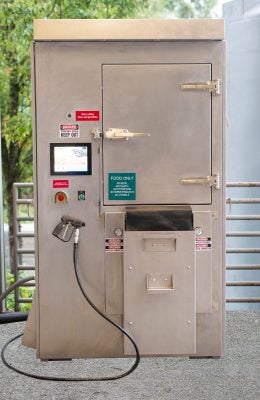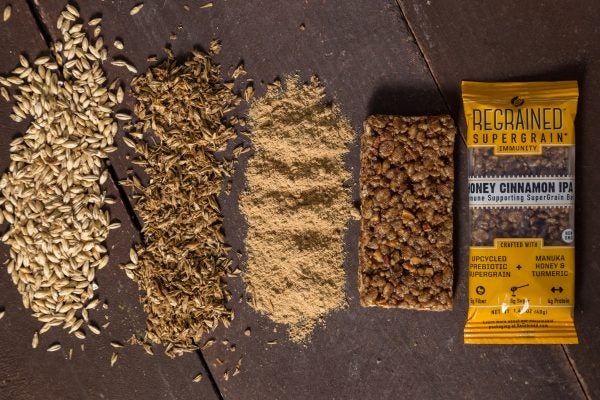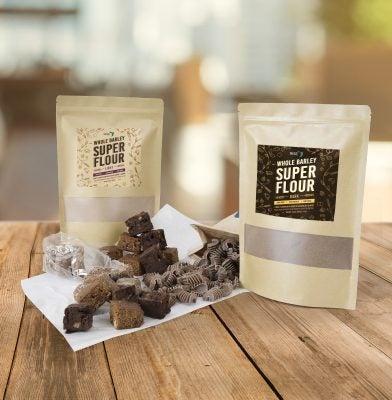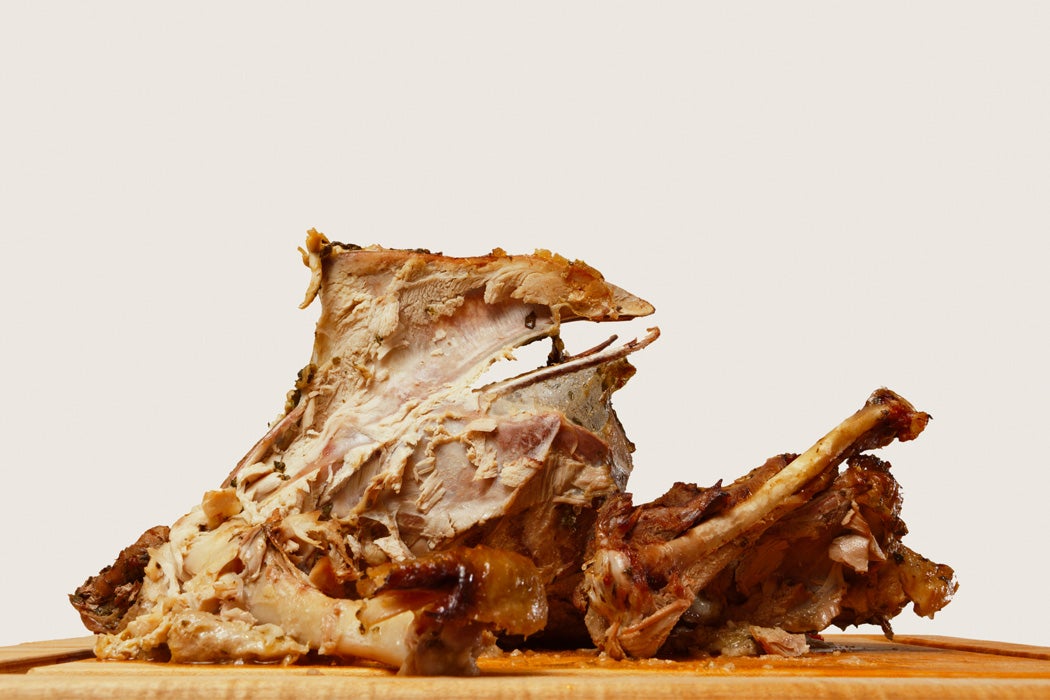Every Thanksgiving season Americans cook roughly 46 million turkeys and throw away about 6 million of them, according to the Natural Resources Defense Council (NRDC), which published the staggering waste stats for the 2016 holidays. While most people don’t dump the whole birds into garbage bins, overall they discard more than 200 million pounds of turkey meat. The 2018 estimates aren’t up yet, but the statistics are unlikely to change drastically.
However, the food waste problem isn’t limited to the holiday season. It is a year-round crisis. Nearly one third of the food grown, produced, and transported in the United States is wasted annually, amounting to 96 billion pounds and $165 billion in losses. American consumers, businesses, and farms spend $218 billion on growing, processing, transporting, and disposing food that is never eaten, sending most of it to landfills, where it generates as much greenhouse gas as 37 million automobiles. Neither is this phenomenon confined only to the United States. The United Nations estimates that 1.3 billion tons of food is wasted every year, while almost 1 billion people go undernourished and another 1 billion hungry.
But now socially conscious startups are finding creative ways to tackle this problem. Some repurpose ugly fruit into fresh squeezed juices. Others build apps to connect food producers with food rescue organizations to help save usable sustenance rather than dumping it. Innovators devise techniques to convert food scraps into organic fertilizer, compostable bioplastics, and even renewable energy. And entrepreneurs find ways to turn the byproducts of food production into new forms of food and drinks.
“We are seeing an absolute explosion of innovation and entrepreneurship around the area of food waste,” says Renske Lynde, co-founder of Food System 6, a California-based non-profit focused on improving the existing food system. “There is a huge market and appetite for these types of products—and an incredible amount of capital coming into the space.”
Waste From Farm to Fork
Food waste occurs at every stage of food production, from farm to fork. Ugly produce that doesn’t meet the aesthetic standards of the marketplace is left to rot in the fields or in landfill; food spoils during transport; edible scraps and expired products are tossed away by both retailers and consumers. In addition to the loss of nourishment, this also is a huge waste of resources and energy.
In developed countries, this so-called post-consumer food waste accounts for the greatest proportion of food lost. Governments around the globe are setting ambitious goals to reduce the amount of food being dumped. As landfills run out of space, an increasing number of towns are diverting food waste to compost and anaerobic digestion (AD) facilities, using the end product to restore depleted soil. AD also captures the gas released by anaerobic microbes when they consume organic matter, converting it into renewable energy for electricity and heat. Other municipalities, like Kitakuyshu city in Japan, use fermentation to create bio-based fuel like ethanol out of organic waste to power vehicular transport.
From Food Waste to Fertilizer and Fuel
As states and cities institute organic waste bans, food tech innovators are devising solutions for better waste reprocessing. WISErg, a startup in Washington State, takes food scraps from supermarkets and converts them into organic fertilizer.
WISErg’s Harvester machine uses a patented biological process to keep food waste from degrading at the grocery stores. The waste is then transferred to a WISErg facility to be converted—by what CEO Brian Valentine calls “an aerobic digestive biological process”—into a highly concentrated liquid fertilizer. “The Harvester is like a smarter version of a food disposal,” Valentine explains. “It knows the weight and kind of material you are putting in, how much was thrown away at what time of day, and the reason for disposal.” This way, WISErg not only creates a valuable product from refuse, it also provides data to help clients better track their waste. WISErg turns the food scraps from 15 supermarkets around Seattle into 5 million gallons of fertilizer per year.

The Israeli-based HomeBiogas created a backyard “eco-appliance” that turns food waste into biogas for cooking and fertilizer for gardening. The company’s personal anaerobic digester enables people to recycle food waste in their own backyards. The mail-order digester unit arrives in a small box and can be safely assembled in less than two hours—without the help of a technician—according to CEO and co-founder Oshik Efrati. The users load waste into the unit via a chute, where the sun heats it and microbes digest it, converting the organic matter into burnable biogas and liquid fertilizer that can be applied to the garden. The gas, which can be delivered into the home or hooked up to an outdoor stove, provides about an hour of cooking time per two pounds of waste, Efrati says.
With customers in more than 100 countries, the startup built a sustainable way to reprocess waste right where it’s produced. “There is no transportation needed to get rid of waste,” says Efrati—which eliminates the pollution generated by garbage trucks, in addition to the landfill gases that organic material would have produced. One unit reduces 6 tons of carbon emission per year, he adds. “Plus you are creating a clean, renewable energy.”
Plastic From Food Scraps
Full Cycle Bioplastics transforms food waste into a compostable and marine-degradable bioplastic, tackling the problems of wasted food and plastic pollution simultaneously. The startup uses a microbial process to break down mixed organic waste—such as inedible food, agricultural byproducts and food-soiled (and thus unrecyclable) paper and cardboard packaging—transforming it into a biodegradable plastic alternative called PHA (Polyhydroxyalkanoate). “In doing so,” says CEO Andrew Falcon, “we mitigate greenhouse gas emissions, help fight global warming, and reduce plastic pollution and the toxicity impact in both land and the ocean.”
If plastics continue to flow into the ocean at the same rate, by the year 2050, it will contain more plastic than fish, states the Ellen MacArthur Foundation. Bioplastics may help solve this problem. Until now, bio-based plastics were made using raw materials like the sugars from corn and cassava, but making them from discarded food leftovers kills two birds with one stone. “Right now, almost all bioplastic is made from virgin materials—you have to grow the corn, for example,” explains Bridget Croke, vice president of external affairs at Closed Loop Partners, an investment and innovation firm that supports startups and research aimed at building a more circular economy. “If we were able to use food waste to create bioplastics, that would be a really interesting value-add for the material.”
Scientists worldwide are considering food waste as a replacement for oil-based plastics. Researchers in the European Union have already devised ways to create bioplastics from chicory root, Jerusalem artichoke and cheese waste. Though not yet on a commercial scale, Full Cycle has recently teamed up with two packaging companies to produce a compostable, bio-based film to be used in packaging for products ranging from granola bars to potato chips.

Upcycling Food Byproducts
When Daniel Kurzrock, co-founder of ReGrained, started making beer in his fraternity house kitchen as a UCLA undergrad, he threw out the spent grains left over after the brewing process, which felt really wasteful. “That wasn’t considered food, and we didn’t know what to do with it,” he says. “But it smelled like bread and looked like oatmeal, so we thought, ‘what if we turned it into a food and sold it to friends?’” The bread Kurzrock sold to his fraternity brothers funded his homebrew operation—and a business idea was born.
Today, Kurzrock and his partner sell granola bars made from spent grain they collect from local breweries, though they have “rebranded” their primary ingredient. “The term ‘spent’ grain suggests it has no value,” he explains. “We are trying to create a new language to talk about this supergrain that is created every time beer is brewed.”
It takes about a pound of grain to make a six-pack of beer, says Kurzrock, so breweries generate billions of pounds of spent grain. Generally, breweries used to be located outside of cities and closer to agricultural fields, so the nutrient-dense spent grain went to feed the cattle. But as craft breweries proliferate in urban centers, most are paying to haul away their spent grain, with much of it going to landfills.
Rise Products in Brooklyn makes brownie mix and two types of flour from spent grain—a light variety from ales and pilsners, and a dark one from stouts and porters. Co-founder Bertha Jimenez says the company is testing different applications for the “byproduct of our byproduct” – the material that remains after spent grain is dried, milled and processed into flour. Potential future products include pet food and cosmetics because the leftovers contain a lot of beta glucan, which Jimenez says “is really good for softening the skin.”

The coffee-making industry also produces a nutrient-rich byproduct called cascara—the husks of the coffee cherry left after extracting the beans. Lazy Bear Tea co-founder Daniela Uribe, who grew up in a coffee-growing region of Colombia, remembers the huge piles of rotting coffee fruit; when it rained, the runoff flowed into the rivers, polluting the waters. She stumbled upon the cascara goodness by chance. “When my cousin first brought me some dried coffee fruit and told me to make a tea from it, I looked at him like he was crazy, like he was asking me to drink trash,” says Uribe—and then she fell in love with the tea and the idea of reprocessing waste into a tasty drink. Though countries like Yemen, Ethiopia and Bolivia have been brewing cascara into tea for decades, Uribe’s company, which sells bottled iced cascara tea, is among the first to market the antioxidant-rich beverage in the US.
Get Our Newsletter
Renewal Mill takes another nutrient-dense byproduct—the okara pulp that remains after soybeans are processed into soymilk—and turns it into sugar- and gluten-free, protein-rich flour, naturally high in fiber. Traditionally, okara pulp left after making soymilk and tofu would end up on farmland, landfill, or as cattle fodder. Co-founder Claire Schlemme, Renewal Mill says the company plans to work on repurposing other leftovers, such as olive and grape pomace, yellow pea starch, potato pulp, almond meal, and pistachio shells.
Adding Income, Cutting Waste
By finding good uses for materials traditionally considered food waste, companies can create new streams of revenue, notes Thomas Trabold, associate professor and sustainability department head at Rochester Institute of Technology, who is working with a local tofu manufacturer to convert liquid waste into an enriched biochar fertilizer. Similar to how oil refineries process crude oil into gasoline, diesel, and kerosene, it’s possible to create “biorefineries” out of wasted food, Trabold says. Experts predict that as a growing number of cities and towns focus on reducing food waste, this will help create circular economy and a sustainable food system. As Jimenez puts it, “Waste only exists because we haven’t found the right application for it yet.”







